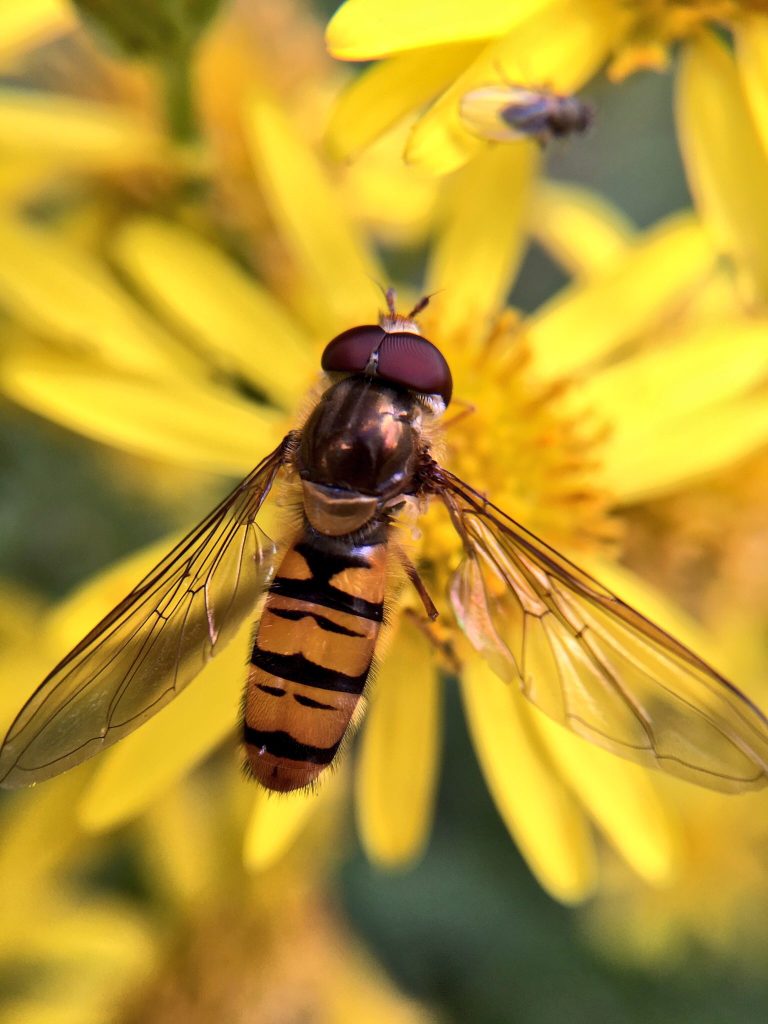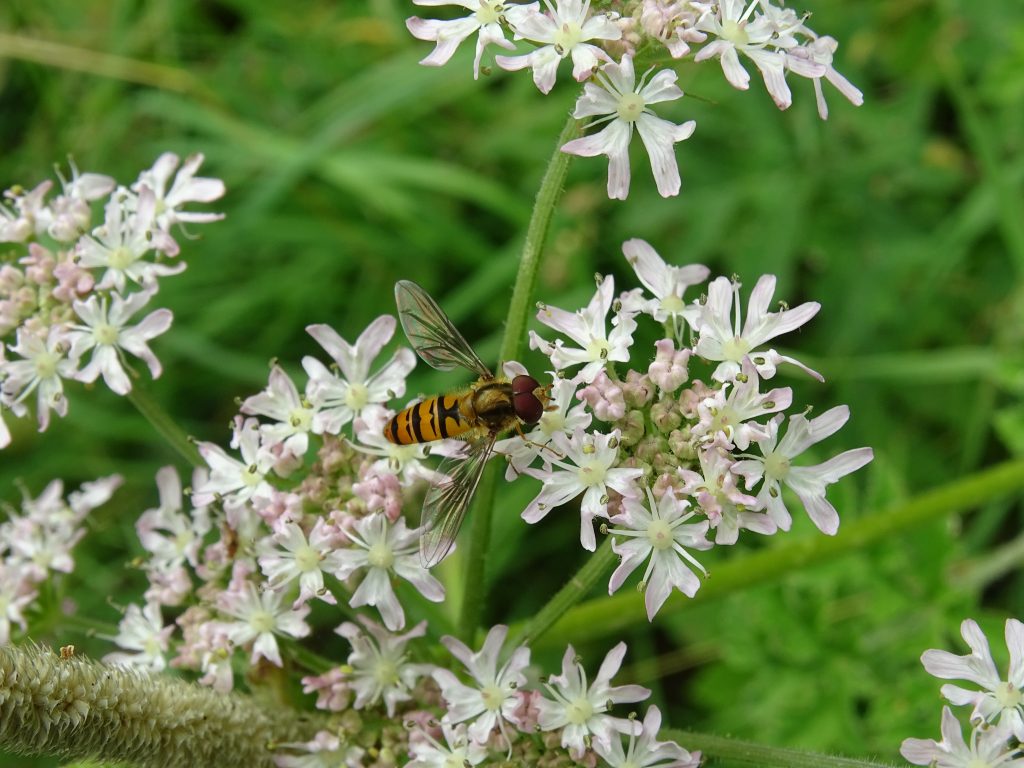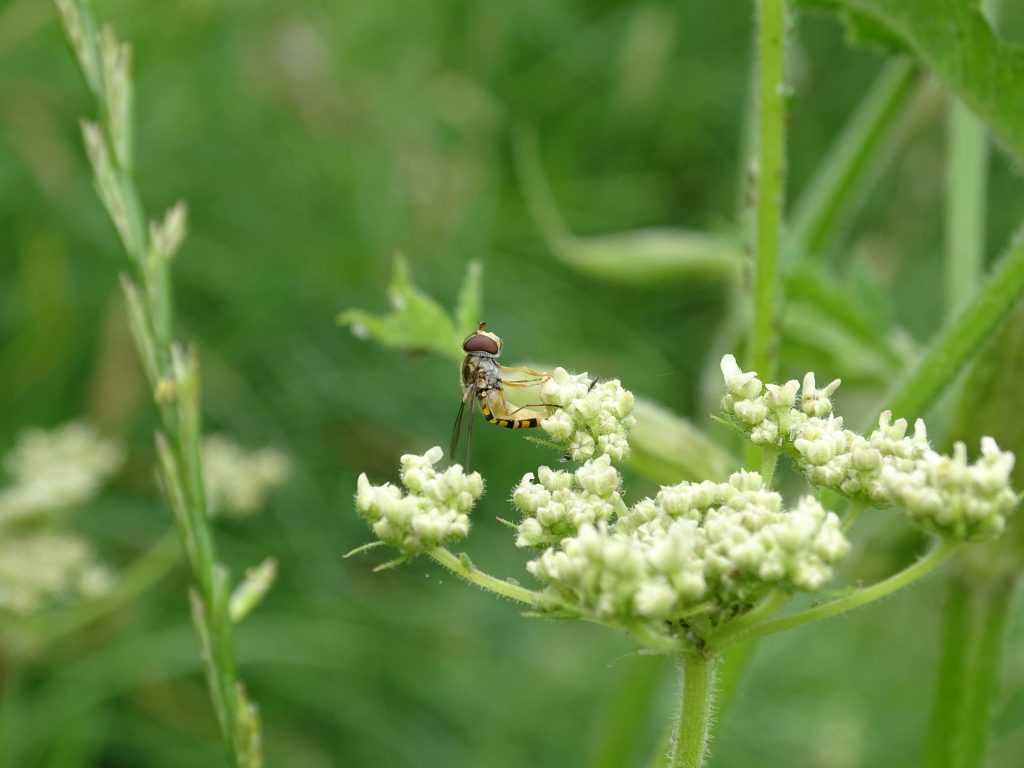Guest blog by Ashleigh Whiffin, entomologist (NMS)
The breath-taking Microsculpture exhibition of insect portraits opens at RBGE later this month and it’s no secret that I’m a little bit excited! As an Entomologist, you could say I’m a bit biased; I love insects and spend my days studying them; curating a large insect collection at National Museums Scotland, as well as chasing them around in my free time, trying to photograph and identify them.

The main reason I’m so happy that this exhibition is coming to Edinburgh is because it’s a chance for people to see insects through fresh eyes. The huge portraits (taller than a person) that make up the exhibition reveal intricate details which are often not possible to see with the naked eye. The exhibition combines art and science and provides an excellent opportunity to change people’s perceptions of insects. Some of the striking subjects featured in the exhibition can even be found right on your doorstep…

One such insect is Episyrphus balteatus – more commonly referred to as the marmalade hoverfly. Hoverflies are a group of flies known for their excellent mimicry (imitating wasps or bees) to defend themselves against predators. This species is roughly 1cm in length and can be recognised by its orange body which has thick and thin black bands across it; a bit like marmalade with thick and thin cut pieces!

It’s one of our most common hoverflies in the UK, and it can be found in a range of habitats, from sunny woodlands and hedgerows to parks and gardens. Adults feed on the nectar of flowers like tansy, common ragwort and cow parsley and can be seen in large number in the summer months. Their populations are boosted in some years, when huge numbers migrate here from the continent. If you’re a gardener you’ll particularly like these flies, as the larvae are predators of aphids – natures very own pest control!
This is just one of the 26 insects featured in the exhibition. Microsculpture showcases a rich variety of colours, shapes and structures; representing just how diverse insects are. Go and see it for yourself, you’ll see what I mean.
Microsculpture runs from Saturday 29 June to Sunday 15 September and more details are available here.
